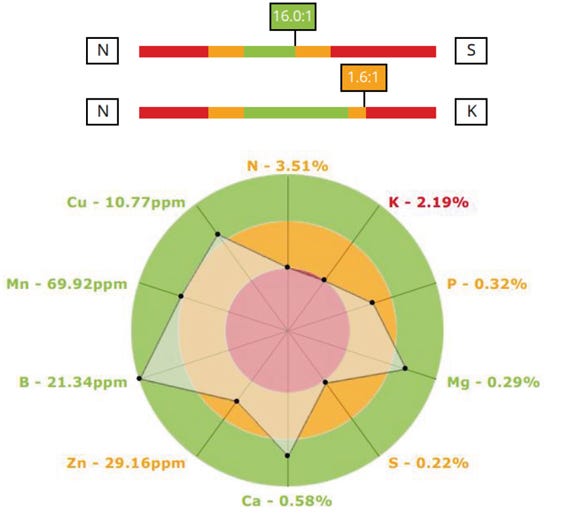
If you push for super-high corn yields, you may be tissue-testing already. If not, it’s another tool to consider.
“We believe there is value in seeing if plants are taking up nutrients as we think they are,” explains Betsy Bower, an agronomist with Ceres Solutions, based in west-central Indiana. “If you’re just starting out, we suggest sampling in corn at least three times: at V5 or the five-leaf stage, around V12 and at the R1 pollination stage.”
Related: What you can learn from early-season tissue testing
Tissue testing can be especially helpful in tracking micronutrients, since soil tests are a less reliable measurement for macronutrients. Tissue tests also track the nitrogen to sulfur and nitrogen to potassium ratios. If you find nutrients like nitrogen, sulfur or zinc are deficient early, you can make applications yet this season, Bower emphasizes.
Bower acknowledges that tissue test results can sometimes be difficult to explain, especially if weather conditions are unusual. “Over time, you begin to pick up trends and better understand what’s happening inside plants when you pull samples,” she says. “It’s not perfect, but it can be a good tool to help better diagnose what’s going on in the field.”
Corn Watch example
Corn Watch is sponsored by Seed Genetics Direct. It follows a cornfield in the Eastern Corn Belt so you can see if the same observations might explain what’s happening in your fields.
In 2020, Bower demonstrated how to pull samples for Corn Watch ’20, and even pulled samples at mid-season. Ceres Solutions provided sampling bags and covered testing costs. Samples were analyzed by Sure-Tech Labs, Indianapolis, Ind.
Here’s a look at results from sampling Corn Watch ’20 at V5. Bower uses it as an example to explain how to interpret results.
Results are listed as percentages for nitrogen, phosphorus, potassium, sulfur, magnesium and calcium. The V5 results for these nutrients were 4.03, 0.31, 2.77, 0.26, 0.26 and 0.7, respectively. The lab classifies each nutrient as deficient, responsive, adequate or excessive. If it’s deficient or responsive, it could pay to apply that nutrient now. In this example, nitrogen, phosphorus, potassium and sulfur were responsive, and magnesium and calcium were adequate. The lab also depicts the results in a pie chart.
 CHECK RESULTS: The tissue test report shows the numbers quantitatively, in a pie chart and in a bar graph.
CHECK RESULTS: The tissue test report shows the numbers quantitatively, in a pie chart and in a bar graph.

Boron, zinc, copper and manganese are reported in parts per million. Numbers were 18.48 for boron, excessive; 27.53 for zinc, deficient; 69.73 for manganese, deficient; and 16.1 for copper, adequate.
The grower applied zinc with starter fertilizer. “It’s still not unusual to find zinc low early in the season,” Bower says. “Corn is very responsive to zinc, and it’s most critical early. We like to see it at 30 ppm minimum, but we get really concerned if it’s below 20.”
In this case, a foliar zinc product could have been applied before V10, she notes.
Bower also looks carefully at ratios. In this case, the N:S ratio was about 15 to 1. “That’s acceptable. If the ratio gets too high, we recommend adding sulfur,” she says. “Sulfur helps nitrogen function more efficiently.”
The ideal N:K ratio is 1.4 to 1.6 to 1, she notes. Here, it was still in the acceptable range.
Come back to see how the field progressed during the season.
About the Author(s)
You May Also Like




